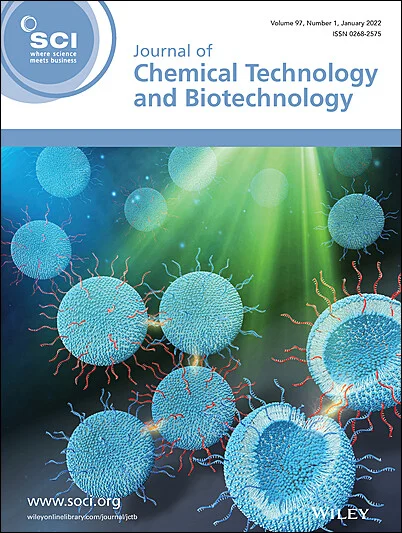下载PDF
{"title":"植物修复:实现废水中重金属生物修复的途径","authors":"Naila Amel Agoun, Fatma Gizem Avci","doi":"10.1002/jctb.7745","DOIUrl":null,"url":null,"abstract":"<p>Heavy metals (HMs) have emerged as a significant and complex water pollution problem globally. These pollutants are particularly concerning due to their teratogenic, mutagenic, poisonous and carcinogenic properties, as well as their non-biodegradability. Traditional removal techniques often fall short in addressing these issues, leading to a search for more effective solutions. One promising alternative is the phycoremediation process, which employs microalgae to remove HMs from wastewater. This method is not only cost-effective but also environmentally friendly, offering the additional benefits of nutrient recovery from polluted water and conversion into value-added products. This review delves into the capabilities of microalgae in remediating HM-polluted water, examining the various factors and methods that affect the process. Key improvements that can enhance the efficiency of phycoremediation include immobilizing microalgae to increase their stability and longevity, utilizing binary cultures to harness synergistic effects and implementing cellular and genetic modifications to boost HM uptake and resilience. Moreover, the integration of algorithms and artificial intelligence can optimize phycoremediation processes by predicting and controlling environmental conditions, enhancing the precision and effectiveness of HM removal. The combination of these advanced strategies holds promise for overcoming the limitations of conventional methods, positioning phycoremediation as a viable solution for mitigating HM contamination in water bodies. © 2024 The Author(s). <i>Journal of Chemical Technology and Biotechnology</i> published by John Wiley & Sons Ltd on behalf of Society of Chemical Industry (SCI).</p>","PeriodicalId":15335,"journal":{"name":"Journal of chemical technology and biotechnology","volume":"100 1","pages":"13-23"},"PeriodicalIF":2.8000,"publicationDate":"2024-09-03","publicationTypes":"Journal Article","fieldsOfStudy":null,"isOpenAccess":false,"openAccessPdf":"https://onlinelibrary.wiley.com/doi/epdf/10.1002/jctb.7745","citationCount":"0","resultStr":"{\"title\":\"Phycoremediation: a path towards heavy metal bioremediation from wastewater\",\"authors\":\"Naila Amel Agoun, Fatma Gizem Avci\",\"doi\":\"10.1002/jctb.7745\",\"DOIUrl\":null,\"url\":null,\"abstract\":\"<p>Heavy metals (HMs) have emerged as a significant and complex water pollution problem globally. These pollutants are particularly concerning due to their teratogenic, mutagenic, poisonous and carcinogenic properties, as well as their non-biodegradability. Traditional removal techniques often fall short in addressing these issues, leading to a search for more effective solutions. One promising alternative is the phycoremediation process, which employs microalgae to remove HMs from wastewater. This method is not only cost-effective but also environmentally friendly, offering the additional benefits of nutrient recovery from polluted water and conversion into value-added products. This review delves into the capabilities of microalgae in remediating HM-polluted water, examining the various factors and methods that affect the process. Key improvements that can enhance the efficiency of phycoremediation include immobilizing microalgae to increase their stability and longevity, utilizing binary cultures to harness synergistic effects and implementing cellular and genetic modifications to boost HM uptake and resilience. Moreover, the integration of algorithms and artificial intelligence can optimize phycoremediation processes by predicting and controlling environmental conditions, enhancing the precision and effectiveness of HM removal. The combination of these advanced strategies holds promise for overcoming the limitations of conventional methods, positioning phycoremediation as a viable solution for mitigating HM contamination in water bodies. © 2024 The Author(s). <i>Journal of Chemical Technology and Biotechnology</i> published by John Wiley & Sons Ltd on behalf of Society of Chemical Industry (SCI).</p>\",\"PeriodicalId\":15335,\"journal\":{\"name\":\"Journal of chemical technology and biotechnology\",\"volume\":\"100 1\",\"pages\":\"13-23\"},\"PeriodicalIF\":2.8000,\"publicationDate\":\"2024-09-03\",\"publicationTypes\":\"Journal Article\",\"fieldsOfStudy\":null,\"isOpenAccess\":false,\"openAccessPdf\":\"https://onlinelibrary.wiley.com/doi/epdf/10.1002/jctb.7745\",\"citationCount\":\"0\",\"resultStr\":null,\"platform\":\"Semanticscholar\",\"paperid\":null,\"PeriodicalName\":\"Journal of chemical technology and biotechnology\",\"FirstCategoryId\":\"5\",\"ListUrlMain\":\"https://onlinelibrary.wiley.com/doi/10.1002/jctb.7745\",\"RegionNum\":4,\"RegionCategory\":\"生物学\",\"ArticlePicture\":[],\"TitleCN\":null,\"AbstractTextCN\":null,\"PMCID\":null,\"EPubDate\":\"\",\"PubModel\":\"\",\"JCR\":\"Q3\",\"JCRName\":\"BIOTECHNOLOGY & APPLIED MICROBIOLOGY\",\"Score\":null,\"Total\":0}","platform":"Semanticscholar","paperid":null,"PeriodicalName":"Journal of chemical technology and biotechnology","FirstCategoryId":"5","ListUrlMain":"https://onlinelibrary.wiley.com/doi/10.1002/jctb.7745","RegionNum":4,"RegionCategory":"生物学","ArticlePicture":[],"TitleCN":null,"AbstractTextCN":null,"PMCID":null,"EPubDate":"","PubModel":"","JCR":"Q3","JCRName":"BIOTECHNOLOGY & APPLIED MICROBIOLOGY","Score":null,"Total":0}
引用次数: 0
引用
批量引用


 求助内容:
求助内容: 应助结果提醒方式:
应助结果提醒方式:


